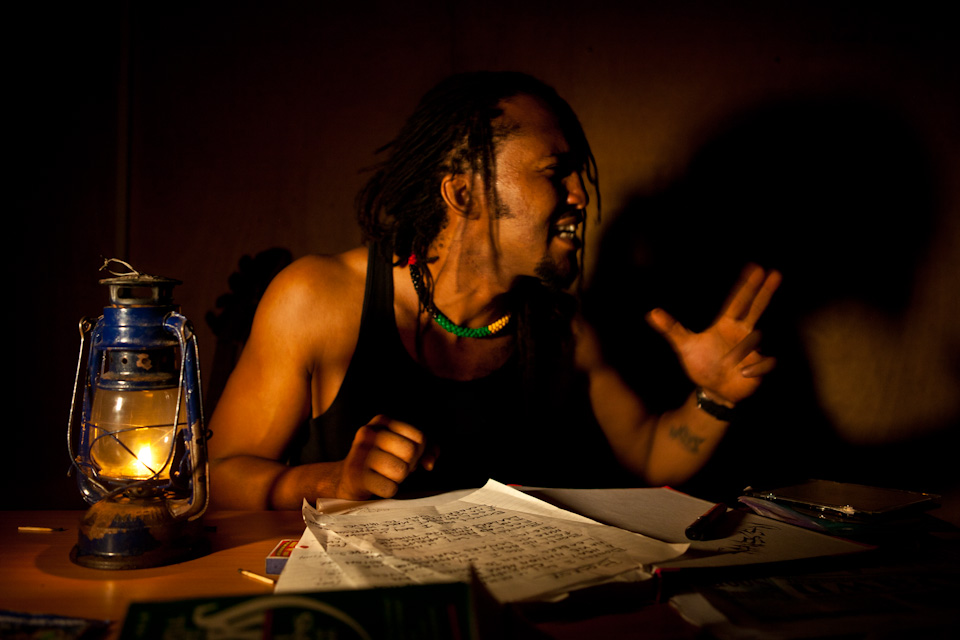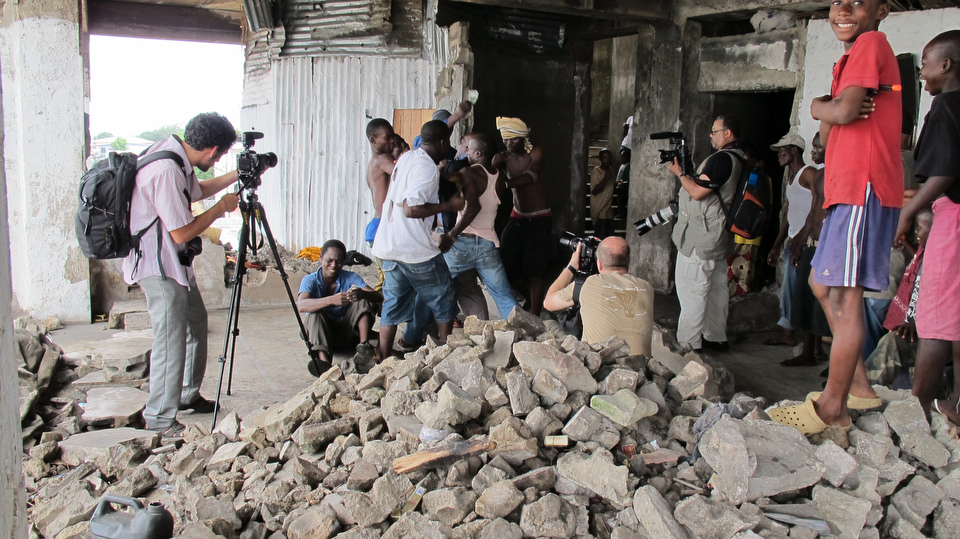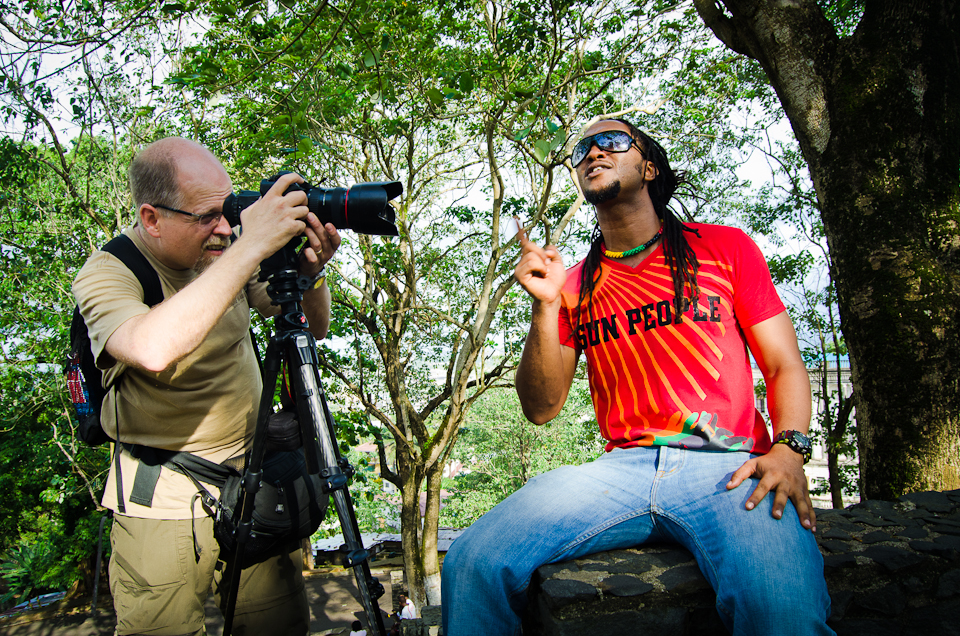
“This is a dark city, but one day this place is going to shine.,” said Rabbie Nassrallah aka Nasseman, seen here singing one of his songs during the filming of his music video. Photo by Bruce Strong
Corruption bringing poverty
And poverty putting my sisters on the street…
They abuse us many days
And misuse us so many ways
– Nasseman, ‘Bonkey’
We were first introduced to Rabbie Nassrallah, aka Nasseman, last Wednesday night, by Sayeed, the manager of our guesthouse. We didn’t realize at the time that we were meeting Liberia’s premier reggae star, nor just how quickly he would become a significant part of our project.
Rabbie has been living in Monrovia his entire life, including during the war when hundreds of thousands fled the country. He has some incredible and at times disturbing stories from Liberia’s tumultuous recent history, beginning in the earliest years of his childhood. We’ve heard only a few of these, but far more of his jamming reggae tracks. Rabbie writes music with a focus on social justice, singing about the problems he sees in Liberian society (as well as a few love songs and club numbers). After hearing some of his songs and seeing a couple music videos from an album several years ago, Chris Giamo arranged to start shooting a music video for an unreleased track during our downtime from the main Together Liberia project. The rest of the group was extremely excited about the idea, so we’ve got a full crew working for Rabbie, who couldn’t be more elated – it’s a blessing from God, he says.

The team shoots a scene for Rabbie Nassrallah’s music video in the former Ecobank building in Monrovia. Photo by Sung Jin Park
Traveling around with Rabbie has taken us to some places in the city we probably wouldn’t have made it to on our own. We did some gorgeous master shots for his song ‘Bonkey’ at a local music studio, but the rest of the footage will be scenes in and around Monrovia; the song is about corruption and the impacts it is having on Liberia. We filmed one scene in a five story former Ecobank building that was largely destroyed during the war. We then went to the top of Montserrado Hill where the remains of Ducor Palace Hotel stand – Liberia’s flagship luxury hotel until the war claimed it as well, now falling further into disrepair as Libyan plans to renovate it will most likely not be happening… Other shots will be from some of the slums in Monrovia, rural areas, the streets, law offices. We’ve been busy.
With as many as five cameras on set, we attract a bit of attention. One of Rabbie’s sound engineers asked how much we were charging, and was quick to give me one of his own tracks to listen to. Filming a scene on Sunday, I learned from Liberian actor Henry Mamulu that all of the locally produced films and music videos are made on a single old video camera, owned and controlled by one media group. So the chance for us to create top-notch videos for a local musician is no small thing. With the popularity Rabbie has already built in this region, and the relevance of his lyrics to people all over the continent and world, we’re hoping that some international exposure could be a big step for his career, if not the Liberian music scene. Media in all forms play a part in shaping Liberian culture and society, and we welcome the chance to expand the project’s reach in a direction we didn’t originally plan on taking.
The video we’re working on is for a track from Nasseman’s new album, which won’t be out until November, but you can get his 2008 album on iTunes, or check out his stuff on youtube and other common internet locations.
Vist Nasseman’s site, nasseman.com


